In Excel, it's pretty easy to fit a logarithmic trend line of a given set of trend line. Just click add trend line and then select "Logarithmic." Switching to R for more power, I am a bit lost as to which function should one use to generate this.
To generate the graph, I used ggplot2 with the following code.
ggplot(data, aes(horizon, success)) + geom_line() + geom_area(alpha=0.3)+
stat_smooth(method='loess')
But the code does local polynomial regression fitting which is based on averaging out numerous small linear regressions. My question is whether there is a log trend line in R similar to the one used in Excel.
An alternative I am looking for is to get an log equation in form y = (c*ln(x))+b; is there a coef() function to get 'c' and 'b'?
Let my data be:
c(0.599885189,0.588404133,0.577784156,0.567164179,0.556257176,
0.545350172,0.535112897,0.52449292,0.51540375,0.507271336,0.499904325,
0.498851894,0.498851894,0.497321087,0.4964600,0.495885955,0.494068121,
0.492154612,0.490145427,0.486892461,0.482395714,0.477229238,0.471010333)
The above data are y-points while the x-points are simply integers from 1:length(y) in increment of 1. In Excel: I can simply plot this and add a logarithmic trend line and the result would look:

With black being the log. In R, how would one do this with the above dataset?

